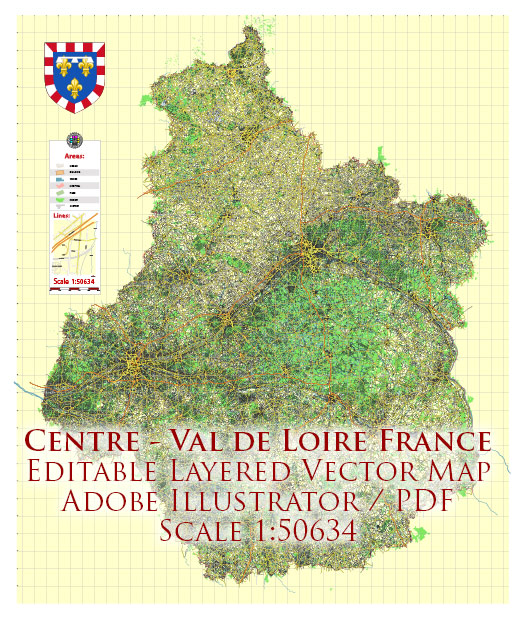The Centre-Val de Loire region in France has a rich history of urban development that spans many centuries. The region is known for its beautiful landscapes, historic towns, and cultural heritage. Here’s a brief description of the history of urban development in the Centre-Val de Loire region:
- Ancient Roman Influence: The region was inhabited by Celts before the Roman conquest in the 1st century BC. The Romans established several settlements and roads in the area, which played a crucial role in the region’s urban development.
- Medieval Period: During the medieval period, the Centre-Val de Loire region saw the emergence of numerous towns and cities. Many of these towns, such as Orleans, Tours, and Blois, developed around castles or fortifications, serving as centers of power and trade. The Loire River, with its strategic location and navigability, facilitated commerce and furthered urban development.
- Renaissance Era: The Renaissance period brought about significant architectural and urban development in the region, as it did in many parts of France. The Loire Valley, often referred to as the “Garden of France,” was dotted with magnificent châteaux, such as Château de Chambord and Château de Chenonceau. These châteaux and their surrounding landscapes contributed to the region’s cultural and architectural heritage.
- Modernization and Industrialization: With the advent of the Industrial Revolution, the Centre-Val de Loire region witnessed significant changes in its urban landscape. Towns and cities grew, and industrial centers emerged, particularly in the 19th century. Factories, railways, and infrastructure developments transformed the region’s economy and urban areas.
- Preservation and Tourism: In the 20th and 21st centuries, there has been a strong emphasis on preserving the historical and cultural heritage of the region. The Loire Valley, in particular, is recognized as a UNESCO World Heritage site due to its exceptional architectural and natural beauty. Many towns and cities in the region have taken measures to protect and promote their historic character while welcoming tourists to experience the rich history and culture.
- Modern Urban Planning: Today, urban development in the Centre-Val de Loire region reflects a balance between preserving its historical character and accommodating modern needs. The cities and towns continue to grow and adapt, with a focus on sustainable development and preserving the unique architectural and cultural heritage of the region.
The Centre-Val de Loire region is known for its beautiful châteaux, picturesque towns, and the influence of the Loire River. Its history of urban development has been shaped by a rich tapestry of influences, from Roman and medieval origins to the Renaissance and industrialization, creating a unique blend of history, culture, and architecture that continues to attract visitors from around the world.


 Author: Kirill Shrayber, Ph.D.
Author: Kirill Shrayber, Ph.D.